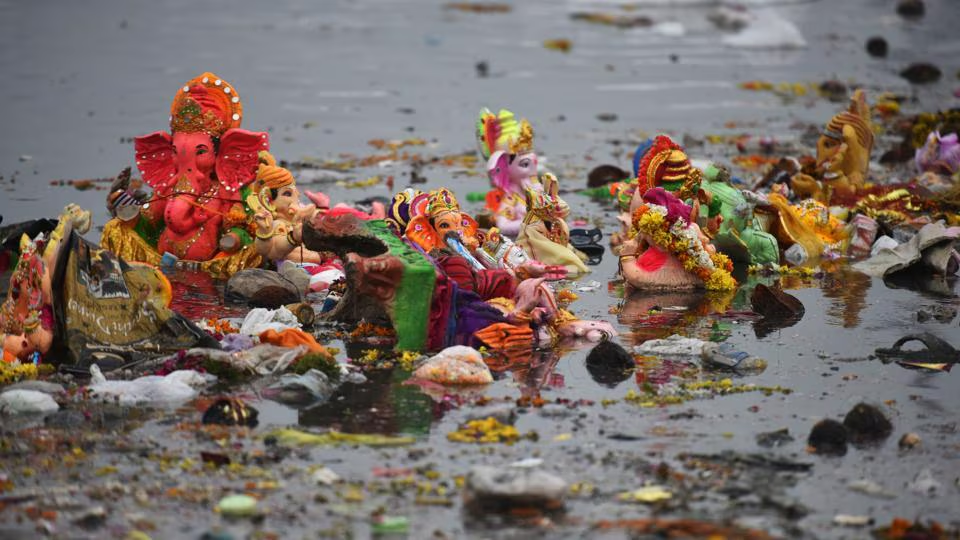Ganesh, also known as Ganapati, is one of the most celebrated and worshiped deities in Hinduism. With his distinctive elephant head and human body, Ganesh embodies a unique blend of qualities that resonate deeply with his devotees. He is the son of Lord Shiva and Goddess Parvati, and he holds a special place in Hindu culture. Ganesh is regarded as the remover of obstacles and the god of beginnings, wisdom, and intellect.
The story of Ganesh’s birth and his elephant head is both fascinating and symbolic. According to Hindu scriptures, Ganesh was created by Goddess Parvati from the sandalwood paste she used for her bath. She breathed life into the figure, instructing him to guard her chamber while she bathed. When Lord Shiva returned home, he was stopped by Ganesh, who did not recognize him and refused to let him enter. In a moment of anger and confusion, Shiva severed Ganesh’s head. Upon discovering the truth, Shiva was upset and promised to replace the head with that of the first living being he encountered, which happened to be an elephant.
Why is Ganesh Chaturthi Celebrated?
Ganesh Chaturthi, also known as Vinayaka Chaturthi, is an important Hindu festival celebrating the birth of Lord Ganesh. The festival typically falls between August and September, based on the lunar calendar. It is a festival of joy and devotion, marked by elaborate preparations, religious ceremonies, and cultural festivities.
The origins of Ganesh Chaturthi can be traced back to ancient times, but it was popularized in its current form during the 19th century by the Maratha king, Chhatrapati Shivaji. Shivaji Maharaj promoted the festival to unite people and promote Hindu culture, especially during the colonial period when public gatherings were restricted. The festival was celebrated with grand processions and public events, which helped to spread its popularity and significance.
Ganesh Chaturthi involves installing idols of Ganesh in homes and public pandals (temporary structures). The idols are adorned with vibrant decorations and worshipped with rituals that include offerings of sweets, flowers, and prayers. The festival is marked by lively processions, music, dance, and various cultural activities. Devotees believe that Ganesh, being the god of beginnings, helps in removing obstacles and bringing good fortune. Hence, the festival is an occasion to seek his blessings for success, health, and prosperity in new ventures.
The ten-day festival culminates with Ganesh Visarjan, where the idols are immersed in rivers, lakes, or the sea. This ritual symbolizes Ganesh’s return to his celestial abode and signifies the cyclical nature of life and the universe. It is a moment that reflects themes of impermanence and renewal.
Environmental Impact of Traditional Ganesh Idols

While Ganesh Chaturthi is a joyous celebration, the modern practice of using Plaster of Paris and synthetic materials for making Ganesh idols has significant environmental consequences. Reports and studies have highlighted the adverse effects of these materials on water bodies and aquatic life.
A report revealed that traditional Ganesh idols made from plaster of Paris are not biodegradable. When these idols are immersed in water, they break into small particles, leading to the contamination of water bodies. The chemicals and dyes used to decorate these idols further contribute to water pollution. The findings in this report indicate that the immersion of these idols results in high levels of toxins in water, which can have detrimental effects on aquatic ecosystems.
Additionally, a study found that the heavy metals and synthetic chemicals used in Ganesh idols are harmful to aquatic life. The study observed that the immersion of these idols led to increased levels of lead, mercury, and other pollutants in water bodies, which can adversely affect fish and other aquatic organisms. The degradation of these materials also contributes to the accumulation of non-biodegradable waste in rivers and lakes.
The environmental impact of traditional Ganesh idols has prompted a growing movement towards the use of eco-friendly alternatives. Eco-friendly idols, made from natural, biodegradable materials such as clay, paper-mâché, or organic substances, offer a sustainable solution to this issue.
Benefits of Eco-Friendly Ganesh Idols

The adoption of eco-friendly Ganesh idols addresses the environmental concerns associated with traditional idols. These idols are designed to dissolve in water without leaving harmful residues, thereby reducing pollution and protecting aquatic ecosystems. The use of natural, non-toxic colors and decorations further minimizes the impact on the environment.
A study found that eco-friendly Ganesh idols made from clay and other biodegradable materials have significantly lower environmental impact compared to traditional idols. The research highlighted that these materials dissolve easily in water and do not contribute to water contamination. Moreover, eco-friendly idols are less likely to release harmful chemicals and heavy metals, making them a safer option for aquatic life.
The benefits of eco-friendly Ganesh idols extend beyond environmental protection. They also promote awareness about sustainability and encourage more responsible practices among devotees. By choosing eco-friendly options, devotees can celebrate Ganesh Chaturthi in a manner that aligns with Hindu values of living in harmony with nature.
Additional Measures for Sustainable Celebrations
In addition to using eco-friendly idols, several measures can enhance the sustainability of Ganesh Chaturthi celebrations. These include:
- Promoting Natural Decorations: Using organic and natural materials for decorating homes and public spaces can reduce the environmental footprint of the festival.
- Organizing Clean-Up Drives: Community clean-up drives after the festival can help address litter and pollution resulting from the celebrations.
Conclusion
Ganesh Chaturthi is a festival that celebrates the birth of Lord Ganesh, a deity symbolizing wisdom, strength, and the removal of obstacles. The festival’s vibrant celebrations and rituals reflect the cultural richness and spiritual significance of Hindu traditions. It is a time for devotees to seek Ganesh’s blessings for success, prosperity, and new beginnings.
However, as we celebrate this joyous occasion, it is important to consider the environmental impact of our practices. The shift towards eco-friendly Ganesh idols represents a step towards responsible worship and sustainable living. By making conscious choices and adopting environmentally friendly practices, we can honor the true spirit of Ganesh Chaturthi while also protecting our planet for future generations.







